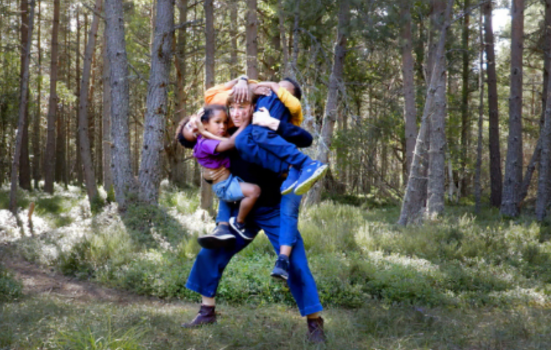Evaluation of carer support programme funded by Creative Scotland finds that despite a strong positive response from participants and organisations there are questions concerning sustainability.

Robbie Synge
Creative Scotland should become an active stakeholder in policy development for childcare and care services, according to a report on how organisations can better support creatives with caring responsibilities.
Commissioned by Creative Scotland, the Radical Care initiative featured six projects designed to reduce barriers for those with caregiving responsibilities working in the creative industries and evaluated their success. The projects included residencies with an employment and organisational focus and were delivered by Barrowland Ballet, Hospitalfield, Moniack Mhor, Manipulate Arts, Scottish Sculpture Workshop, and The Work Room.
Launching in 2022, each organisation received grants of up to £15,000 from The National Lottery through Creative Scotland. The paid projects had different artistic focuses and offered help, including integrated childcare, peer support, greater flexibility with timings, adjustments to working roles and schedules, childcare and domestic support.
READ MORE:
- Performing arts workers facing ‘significant' childcare challenges
- Women working in theatre 'still impacted by the pandemic'
An evaluation of the programme, conducted by CG Research, found that both organisations and participants primarily experienced positive outcomes. The former increased their knowledge and gained confidence in working with carers, while participants reported feeling less isolated, developing skills, and increasing confidence and professional networks.
However, participants said the opportunities were one-off interventions, and the barriers to careers in the arts and creative industries remain. Meanwhile, organisations expressed concerns that the projects could not be delivered within existing resources and operating models.
Despite the challenges of continuing to provide support to carers at a similar level to what they experienced in the project, the report urged Creative Scotland to continue to take the lead in helping caregivers in the creative sector while building wider support networks for those with caring responsibilities.
As part of this, the report said Creative Scotland should become a model of good practice with adjustments including avoiding school holidays for events and funding application deadlines and providing childcare to enable people with caregiving responsibilities to sustain their professional networks.
Policy development
The report said that as issues around childcare and care services were fundamental barriers to working in the sector, Creative Scotland should be an active stakeholder in policy development in these areas to ensure that the specific requirements of the arts and creative industries are represented.
It also recommended that Creative Scotland explicitly support organisations that extend their access budgets to meet the needs of those with caring responsibilities, with the caveat that this should not negatively impact D/deaf, disabled, or neurodivergent artists.
The funding body should also make it clear to organisations applying for funding that reducing the volume of activity to meet the needs of a targeted group, such as parents or carers, is "valid and supported".
One of the participating organisations, the Scottish Sculpture Workshop (SSW), said: “We can’t do this model of 100% capacity and then add on [caregiving support].
“It is like programming three residencies in one. You can’t be expected to do this and everything else – that is caregiving."
Taking the model forward, SSW said: “How it will work financially is the question - we need to speak to funders about what the models of success are - is it about 100 people doing a workshop or a residency or having 10 people doing a residency who would never have access to a transformational moment?”




